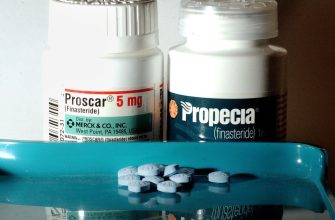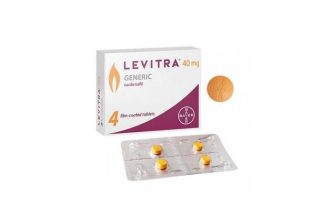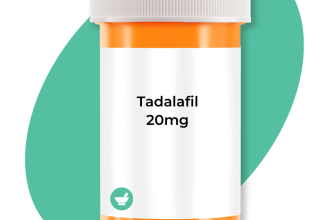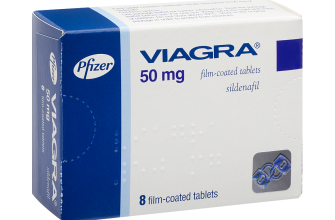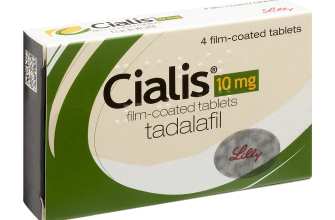Finding a reliable source for Cephalexin without a prescription is within reach for those needing this antibiotic. Patients often seek out this medication due to its effectiveness in treating various bacterial infections, including respiratory and skin infections. Knowing the right outlets can make this process straightforward and convenient.
Various online pharmacies now offer Cephalexin without requiring a prescription. These platforms often have easy-to-use interfaces and provide customer support to assist you through the ordering process. However, it’s crucial to verify that any pharmacy you choose operates legally and adheres to safety protocols. Check for licenses and customer reviews to ensure you’re making a safe purchase.
Always consult with a healthcare professional regarding its use, even if you’re opting for a no-prescription option. Understanding the correct dosage and potential side effects is important for a successful treatment. While Cephalexin can be helpful, using it without proper guidance might lead to complications. Stay informed and prioritize your health while exploring this option.
- Cephalexin No Prescriptions: Understanding the Basics
- What is Cephalexin and Its Common Uses
- Common Uses of Cephalexin
- Can You Obtain Cephalexin Without a Prescription?
- Risks and Side Effects of Self-Medicating with Cephalexin
- Potential Side Effects
- Drug Interactions and Resistance
- Alternative Ways to Obtain Cephalexin Safely
- Importance of Proper Dosage and Administration
- Recognizing the Signs of Allergic Reactions to Cephalexin
- What to Do If You Experience Symptoms
- Preventing Future Reactions
- When to Seek Medical Advice Regarding Cephalexin Use
- Signs of Serious Side Effects
- Consult Before Combining Medications
Cephalexin No Prescriptions: Understanding the Basics
Cephalexin is an antibiotic commonly used to treat various bacterial infections. It belongs to the cephalosporin class of medications, which work by disrupting the formation of bacterial cell walls. This action effectively stops bacterial growth and helps eliminate infections.
Obtaining cephalexin without a prescription may seem appealing, but it carries significant risks. Using antibiotics without professional guidance can lead to inappropriate treatments, increased resistance, and potential side effects. Prior consultation with a healthcare provider ensures the appropriate antibiotic is used for the specific infection, considering individual health conditions and medication interactions.
Common uses of cephalexin include treating respiratory tract infections, skin infections, and urinary tract infections. Dosage may vary based on the infection type and severity, typically ranging from 250 mg to 500 mg taken every six hours. Adherence to the prescribed regimen maximizes treatment outcomes.
Potential side effects can include nausea, diarrhea, and allergic reactions. Immediate medical attention is necessary if symptoms like rash, itching, swelling, or difficulty breathing occur. Monitoring for any adverse effects is crucial to ensure safe usage.
In conclusion, seeking professional advice before starting cephalexin is highly recommended. Understanding its purpose, proper usage, and potential risks is key to effective and safe treatment. Always prioritize health and safety when considering antibiotic usage.
What is Cephalexin and Its Common Uses
Cephalexin is an antibiotic that belongs to the cephalosporin class. It targets specific types of bacteria and effectively helps in treating various bacterial infections. Medical professionals prescribe it to combat infections affecting the skin, respiratory tract, and bones, as well as urinary tract infections.
Common Uses of Cephalexin
Cephalexin is frequently used to treat skin infections like cellulitis and impetigo. It addresses infections resulting from cuts or burns, showing efficacy against organisms such as Staphylococcus and Streptococcus. For respiratory infections, it can be effective against pneumonia or bronchitis caused by susceptible bacteria.
Another common application is for urinary tract infections (UTIs). It works effectively to eliminate bacteria causing these infections, providing relief from symptoms. Additionally, healthcare providers may suggest Cephalexin for certain bone infections, ensuring thorough treatment for these less common but significant conditions.
Can You Obtain Cephalexin Without a Prescription?
No, you cannot obtain Cephalexin without a prescription in most countries, including the United States. This antibiotic requires a doctor’s approval to ensure it is appropriate for your specific condition. A healthcare professional evaluates your symptoms, medical history, and potential contraindications before prescribing it.
Some online pharmacies may claim to offer Cephalexin without a prescription, but caution is necessary. Purchasing antibiotics from unverified sources poses significant health risks. You may receive counterfeit or expired medications, which can lead to ineffective treatment or harmful side effects.
Consulting with a healthcare provider is the best approach. They can provide an accurate diagnosis and recommend the right course of treatment, which may include Cephalexin as needed. Additionally, they can guide you on appropriate alternatives if you cannot take this medication.
If cost is a concern, inquire about generic versions or assistance programs that can help lower the price. Many insurance plans cover prescription antibiotics, making them more affordable. Prioritize your health and safety by obtaining medications through proper channels.
Risks and Side Effects of Self-Medicating with Cephalexin
Using Cephalexin without a prescription carries significant risks. Misdiagnosis leads to inappropriate treatment, potentially worsening an underlying condition. Bacterial infections may persist or worsen, leading to severe complications.
Potential Side Effects
Common side effects of Cephalexin include nausea, diarrhea, and skin rashes. These can occur even in healthy individuals. More serious reactions, such as allergic responses, may arise. Symptoms like swelling, difficulty breathing, or severe skin reactions require immediate medical attention.
Drug Interactions and Resistance
Self-medicating increases the risk of harmful drug interactions. Cephalexin may interact with other medications, affecting their efficacy. Inappropriate use contributes to antibiotic resistance, complicating future treatment options. Bacteria may adapt, rendering Cephalexin ineffective for subsequent infections.
| Side Effects | Symptoms |
|---|---|
| Nausea | Upset stomach, vomiting |
| Diarrhea | Loose stools, abdominal pain |
| Allergic reactions | Swelling, difficulty breathing |
| Skin rash | Itching, redness |
Consult a healthcare professional for proper evaluation and prescription before using antibiotics like Cephalexin. Avoid self-medicating to safeguard your health and ensure effective treatment.
Alternative Ways to Obtain Cephalexin Safely
Consult a licensed healthcare professional who can evaluate your symptoms and medical history. This ensures you receive the right dosage and instructions tailored specifically for you. Many clinics offer telemedicine services where you can discuss your condition and receive a prescription without an in-person visit.
Look for reputable online pharmacies that require a prescription. They often have user-friendly processes to obtain necessary prescriptions from licensed doctors, making it convenient and safe. Verify the pharmacy’s credentials through platforms like the National Association of Boards of Pharmacy.
Consider local health clinics or urgent care centers. They typically have lower consultation fees and can provide guidance as well as prescriptions for antibiotics like Cephalexin when appropriate.
Participating in medication assistance programs offered by pharmaceutical companies can help you access Cephalexin at reduced costs. Check their websites for eligibility criteria and application processes.
Some compounding pharmacies may offer personalized medication formulations. If you have specific health needs, a compounding pharmacist can create a tailored version of Cephalexin under a doctor’s supervision.
Engage in online health forums or communities for advice. Members often share experiences on where to find healthcare providers who prescribe specific medications. Use this resource responsibly and always cross-check information with qualified professionals.
In emergencies, some urgent care centers operate on a walk-in basis. This way, you can receive necessary treatment and prescriptions without prior appointments. Prioritize your health by seeking professional medical advice before self-medicating.
Importance of Proper Dosage and Administration
Follow the prescribed dosage of cephalexin to achieve optimal treatment results. Always take the medication at the same times each day to maintain consistent levels in your bloodstream.
Adults usually receive a dosage ranging from 250 mg to 500 mg every 6 to 12 hours, depending on the specific infection. For children, the dosage is adjusted based on weight, typically calculated in mg per kg. Adhering strictly to these recommendations enhances efficacy and minimizes risks.
Swallow capsules whole with water. If you use the liquid form, shake the bottle well before each dose and measure accurately with a dosing syringe or cup. Avoid skipping doses or stopping treatment prematurely, even if symptoms improve, to prevent antibiotic resistance and ensure complete elimination of the bacteria.
Stay hydrated while taking cephalexin, as increased fluid intake helps your body process the medication effectively. Report any unusual side effects, such as rash or gastrointestinal issues, to your healthcare provider promptly.
Consistent monitoring by your healthcare professional can help adjust dosages as necessary, ensuring safety and effectiveness throughout your treatment. Engaging in open communication with your provider allows for tailored management and better health outcomes.
Recognizing the Signs of Allergic Reactions to Cephalexin
Watch for specific symptoms if you suspect an allergic reaction to cephalexin. Common signs include:
- Rash: Look for hives, redness, or a raised rash on the skin.
- Itching: Notice intense itching, which can occur with or without a rash.
- Swelling: Observe any swelling, particularly in the face, lips, or throat.
- Difficulty Breathing: Pay attention to any trouble breathing or wheezing, which requires immediate action.
- Gastrointestinal Issues: Watch for nausea, vomiting, or diarrhea.
What to Do If You Experience Symptoms
- Stop Taking the Medication: Immediately discontinue the use of cephalexin.
- Seek Medical Attention: Contact a healthcare provider, especially if you experience breathing difficulties or facial swelling.
- Report Your Reaction: Inform your doctor about the symptoms to help with future treatment plans.
Preventing Future Reactions
- Inform Your Doctor: Always disclose any known allergies before starting new medications.
- Read Labels Carefully: Check for cephalosporin or penicillin derivatives in over-the-counter and prescription drugs.
- Carry an Allergy Alert: Consider wearing a medical alert bracelet if you have a history of severe reactions.
When to Seek Medical Advice Regarding Cephalexin Use
If you experience any allergic reactions, including rashes, itching, or swelling, consult a healthcare professional immediately. Allergic responses can occur swiftly, and early intervention is key.
Signs of Serious Side Effects
Watch for symptoms such as:
- Persistent diarrhea or bloody stools
- Severe abdominal or stomach cramps
- Unusual bleeding or bruising
- Difficulty breathing or swallowing
These may indicate more severe reactions or complications requiring prompt attention.
Consult Before Combining Medications
If you plan to use other medications, including over-the-counter drugs and supplements, discuss this with your healthcare provider. Drug interactions could reduce the effectiveness of Cephalexin or increase the risk of side effects.
Regular check-ins with your doctor can also help manage ongoing health conditions while on Cephalexin. This ensures that the treatment aligns with your overall health goals.


